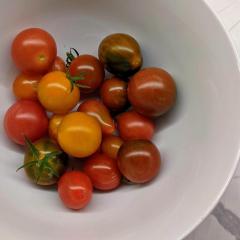-
Welcome to the eG Forums, a service of the eGullet Society for Culinary Arts & Letters. The Society is a 501(c)3 not-for-profit organization dedicated to the advancement of the culinary arts. These advertising-free forums are provided free of charge through donations from Society members. Anyone may read the forums, but to post you must create a free account.
-
Similar Content
-
Sourcing Rare Spices, Herbs, and Compulsory Ingredients Used in Regional Indian, Pakistani, Bangladeshi, and Provincial Iranian (Persian) Cuisines
By Tan Can Cook,
- 17 replies
- 4,305 views
-
- 0 replies
- 405 views
-
- 81 replies
- 45,991 views
-
- 2,655 replies
- 506,033 views
-
- 61 replies
- 10,882 views
-
-
Recently Browsing 0 members
- No registered users viewing this page.



Recommended Posts